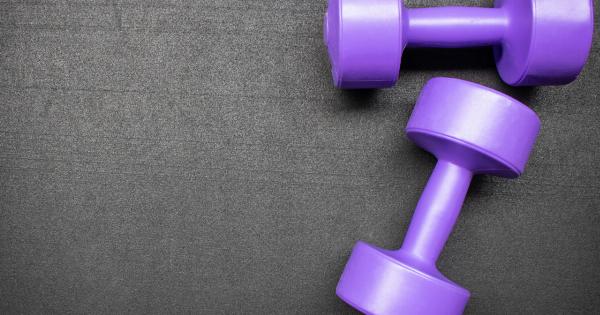Are you tired of working out but not seeing any results? We all know that physical exercise is important, but it’s not the only way to lose weight.
Most people assume that they have to hit the gym every day to shed pounds, but that’s not the case. A change in diet can actually help you achieve your weight loss goals more effectively than exercise alone. Here, we’ll show you how to shed pounds without breaking a sweat.
Why Exercise Alone is Not Enough
Let’s face it, exercising is hard. It takes time, energy, and discipline to commit to a workout routine. And even then, results are not always guaranteed. According to multiple studies, diet has a greater impact on weight loss than exercise.
That’s because losing weight requires a caloric deficit, which is the number of calories you burn through physical activity and the number of calories you consume. It’s easier to achieve this deficit by reducing calorie intake than trying to burn off all the calories you consume through exercise alone.
Why a Healthy Diet is Important
A healthy diet is important for everyone, whether you’re trying to lose weight or not. It’s the foundation of a healthy lifestyle and can help you feel more energized throughout the day.
Eating a balanced diet helps keep your body in good shape, reduces your risk of chronic diseases such as diabetes, and can even improve your mood.
How to Change Your Diet to Shed Pounds
The key to shedding pounds is to create a caloric deficit. This means reducing the number of calories you consume and increasing the number of calories your body burns. Here are a few tips to get you started:.
1. Reduce Your Calorie Intake
If you want to lose weight, you need to eat fewer calories than your body burns. You can achieve this by reducing your portion sizes or eating lower-calorie foods. Some simple ways to reduce your calorie intake include:.
- Eating smaller portions
- Choosing leaner cuts of meat
- Drinking water instead of sugary drinks
- Replacing high-calorie snacks with fruit or vegetables
2. Eat More Fruits and Vegetables
Fruits and vegetables are low in calories and rich in nutrients. Eating more of these foods can help you feel fuller for longer, which means you’re less likely to reach for unhealthy snacks between meals.
Aim to eat at least five servings of fruits and vegetables every day.
3. Choose Whole Foods
Whole foods are foods that are minimally processed and don’t contain added preservatives or artificial ingredients. Examples include whole grains, fruits, vegetables, and lean proteins.
These foods are generally more nutrient-dense and lower in calories than processed foods. Choosing whole foods can help you feel fuller for longer and reduce your calorie intake.
4. Stay Hydrated
Drinking plenty of water can help you lose weight. In fact, some studies have found that drinking water before meals can help reduce calorie intake. Aim to drink at least 8 glasses of water every day.
You can also try drinking herbal tea or adding slices of fruit to your water for extra flavor.
5. Monitor Your Portion Sizes
Overeating is one of the main causes of weight gain. Monitoring your portion sizes can help you manage your calorie intake and prevent overeating.
Use smaller plates and avoid eating in front of the TV or computer, as these distractions can make it harder to keep track of how much you’re eating.
6. Avoid Processed Foods
Processed foods are high in calories and often contain added sugar, salt, and fat. Consuming too many of these foods can contribute to weight gain and increase your risk of chronic diseases.
Try to limit your intake of processed foods and choose whole foods instead.
Conclusion
Shedding pounds without breaking a sweat is possible. By making simple changes to your diet, you can create a caloric deficit and lose weight more effectively than with exercise alone.
Remember to reduce your calorie intake, eat more fruits and vegetables, choose whole foods, stay hydrated, monitor your portion sizes, and avoid processed foods. Follow these tips and hit your weight loss goals today!.



























